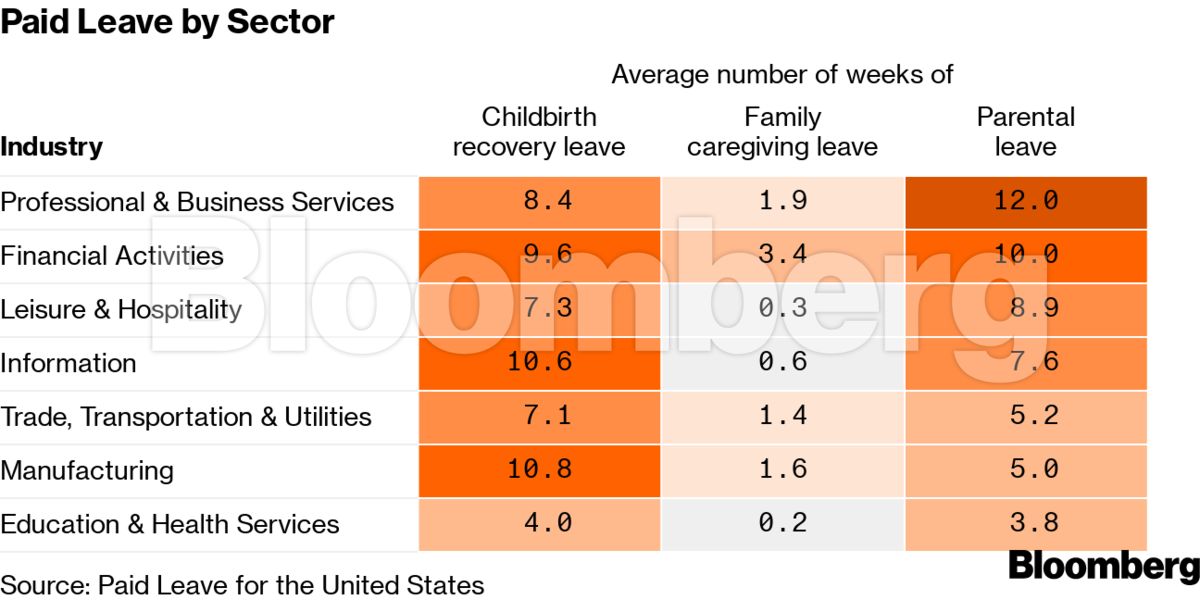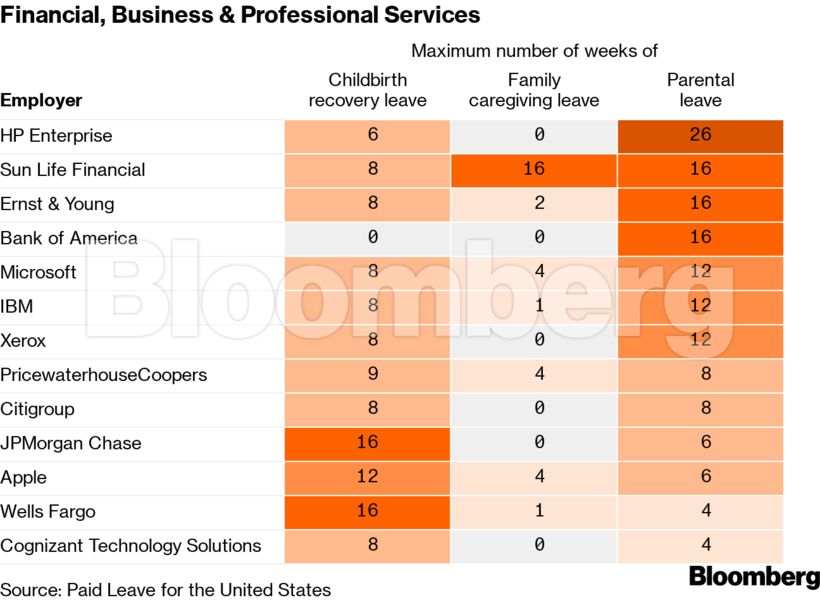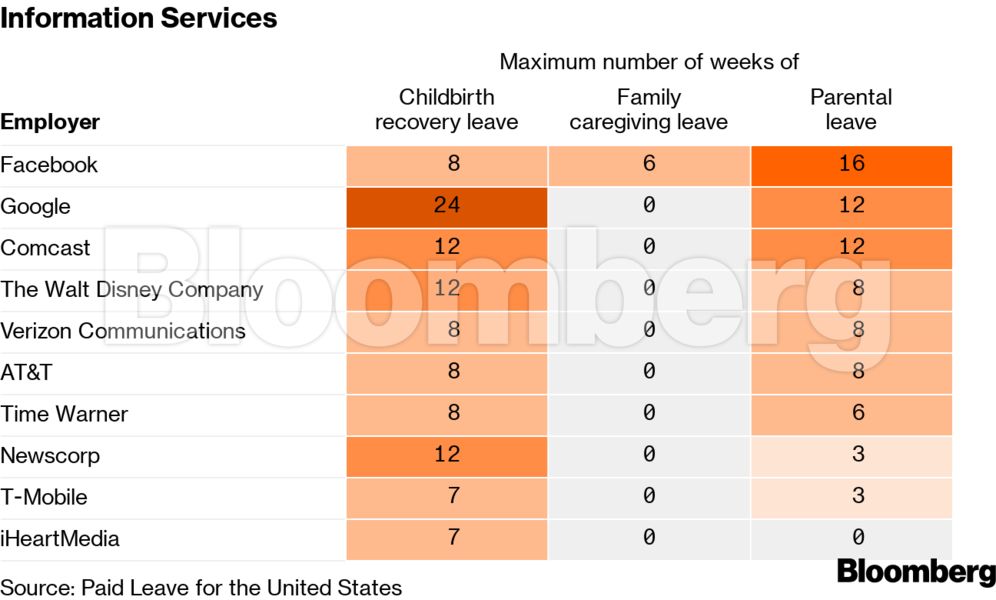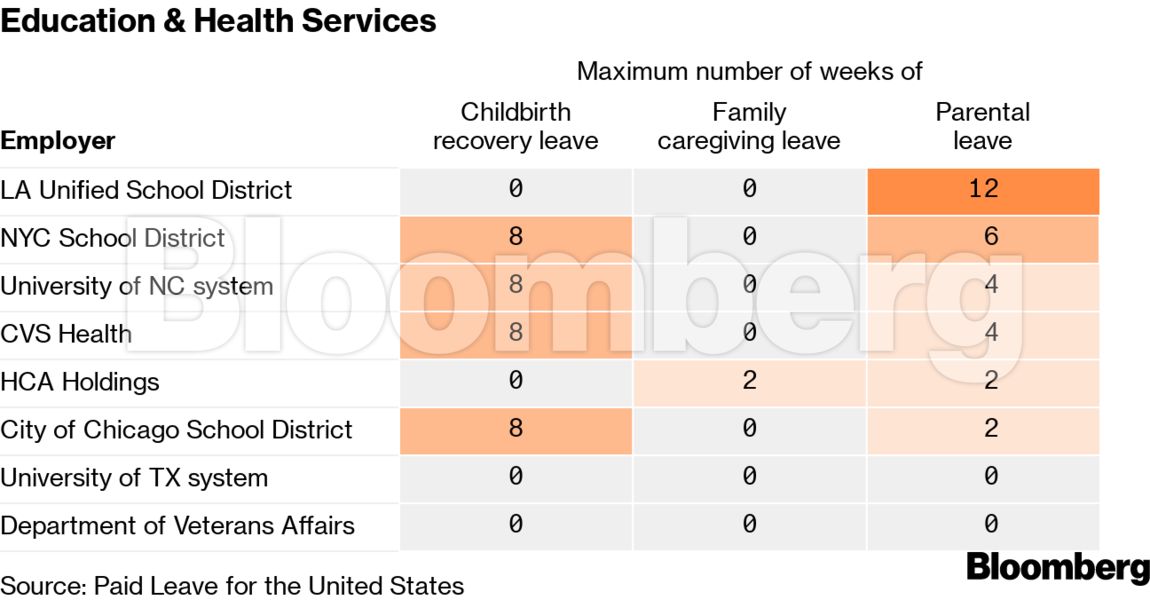 Overall, more companies areproviding more time off to more of their workers, the report finds,with three-quarters of organizations now giving equal time off toall workers. (Photo: Shutterstock)
Overall, more companies areproviding more time off to more of their workers, the report finds,with three-quarters of organizations now giving equal time off toall workers. (Photo: Shutterstock)
(Bloomberg) –In the last few years, the U.S. — a country with nofederal requirement for paid family leave — has seen a parental leave boomlet. Last year alone, 14major employers, including Apple Inc. and Citigroup Inc., announcednew or expanded policies that covered an estimated 2.4 millionworkers.
|But in a nation where over 80 percent of working peopledon't get any time off to care for newborns, the rise in coveragehas been uneven, according to a report released Thursday from PaidLeave for the United States, an advocacy group that catalogsparental leave policies at major U.S. companies.
|Related: Wall Street dads find parental leave easier to getthan to take
|For the first time since it began tracking leave policies in theU.S. four years ago, the group created an industry breakdown ofbenefits and found that workers in certain sectors, like financeand technology, are much more likely to get paid time off to carefor newborns than those in others, like health care and retail.Women and low-income workers are disproportionately represented inthe fields that offer little or no time off. "The sectors wherepeople need paid family leave the most, don't have it," said AnnieSartor, a director at Paid Leave for the United States.
|
Since the group started tracking leave policies in 2016, thebiggest companies have beefed up offerings. After a "banner year"in 2018, which started with Walmart Inc. and Starbucks Corp.announcing new leave policies, "momentum continued" in 2019, saidSartor. The report this year included 94 companies that employ anestimated 126 million workers.
|In general, paid family and medical leave is more popular andinclusive than ever. More companies are providing more time off tomore of their workers, the report finds, with three-quarters oforganizations now giving equal time off to all workers. TargetCorp., for example, last year expanded its policy to includepart-time workers and Goldman Sachs Group Inc. in November changedits leave policy so all new parents— not just "primarycaregivers"—can take off 20 weeks with pay. Beyond the privatesector, in December the U.S. government guaranteed paid time offfor 2.1 million federal workers to care for newborns.
| As the Baby Boomer generationages, "caregiver leave," which gives employees paid time off tocare for a sick or aging family member, is also on the rise withmore than a quarter of employers in the report now offering thebenefit, up from 16% last year.
As the Baby Boomer generationages, "caregiver leave," which gives employees paid time off tocare for a sick or aging family member, is also on the rise withmore than a quarter of employers in the report now offering thebenefit, up from 16% last year.
The general upward trend, however, obscures broader inequitiesin coverage. "The continued expansion is primarily contained towhite collar jobs and leaves behind millions of working people,"Sartor said. The companies in industries competing for the besttalent, like financial services and technology, are engaging in abenefits arms race, which has led to longer and more comprehensiveparental leave policies.
|
Teachers, nurses and truck drivers are less likely to haveaccess to paid time off. Women make up three-quarters of healthcare and education workers, according to the Bureau of LaborStatistics. Almost two-thirds of leisure and hospitality workers,who are also less likely to get leave, are low-income, Sartorsaid.
| In the U.S., where there's nofederal paid family leave program, some businesses have moved in toprovide parents with a safety net. While all of the 20 largest U.S.employers offer at least some paid leave to some of their workers,this approach has still left the majority of working people withoutcoverage. "While large employers are moving on this issue, we'renever going to get to full coverage on an employer by employerapproach," Sartor said. "This really underlines the need for publicpolicy on this issue."
In the U.S., where there's nofederal paid family leave program, some businesses have moved in toprovide parents with a safety net. While all of the 20 largest U.S.employers offer at least some paid leave to some of their workers,this approach has still left the majority of working people withoutcoverage. "While large employers are moving on this issue, we'renever going to get to full coverage on an employer by employerapproach," Sartor said. "This really underlines the need for publicpolicy on this issue."
For the first time, there is bipartisan support in Congress forpaid family leave. The only problem? The parties can't agree on howto fund it. Republicans want to let people dip into their SocialSecurity funds; Democrats want to rely on employer contributions.Still, there's more movement than ever: This week the House Waysand Means Committee held a hearing on the proposals.
|Read more:
Complete your profile to continue reading and get FREE access to BenefitsPRO, part of your ALM digital membership.
Your access to unlimited BenefitsPRO content isn’t changing.
Once you are an ALM digital member, you’ll receive:
- Critical BenefitsPRO information including cutting edge post-reform success strategies, access to educational webcasts and videos, resources from industry leaders, and informative Newsletters.
- Exclusive discounts on ALM, BenefitsPRO magazine and BenefitsPRO.com events
- Access to other award-winning ALM websites including ThinkAdvisor.com and Law.com
Already have an account? Sign In
© 2024 ALM Global, LLC, All Rights Reserved. Request academic re-use from www.copyright.com. All other uses, submit a request to [email protected]. For more information visit Asset & Logo Licensing.








